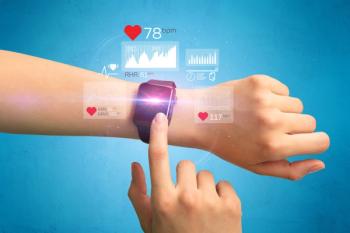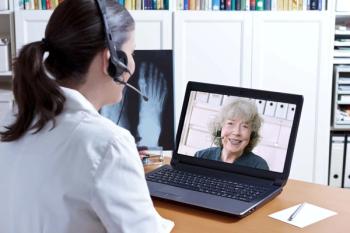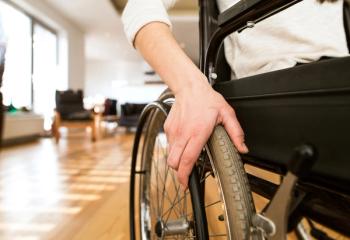
Digital Health
Latest News

Latest Videos

CME Content
More News

This new study examined uptake and use of a digital tool meant to aid in diabetes prevention.

First steps include assembling equity data and reaching out to veterans’ advocacy groups.

To mark the publication of The American Journal of Managed Care®’s 12th annual health IT issue, on this episode of Managed Care Cast, we speak with Christopher M. Whaley, PhD, health care economist at the RAND Corporation, who focuses on health economics issues, including the influence of the COVID-19 pandemic on health care delivery.

Patients were also more likely to stay in treatment longer when their care was delivered virtually, a new survey has found.

The ability to screen for trauma symptoms in certain high-risk populations could soon benefit from biomarker data gathered through wearable devices, according to a new study.

This study observed a rapid increase in the integration of telehealth- and COVID-19–related apps with electronic health records during the COVID-19 pandemic.

Access to electronic health information can be improved through provider assistance for optimal use of a patient portal.

This new report shows people who used the digital therapeutic saw an improvement of 14% to 15% in their average blood glucose levels regardless of their racial or ethnic category.

Patients are essential stakeholders in designing systems to capture social needs. The authors present key findings from patient interviews regarding social needs screening through technology-based modalities.

Primary care provider burnout was analyzed before and after a national initiative to optimize the electronic health record inbox notification system at the Veterans Health Administration.

To try to get a prescription digital therapeutic (PDT) covered, manufacturers need to align the value of their product to the priority of the payer, said Kelly Price, US head of rare disease at HRA Pharma.

Only 18% of US adults with cardiovascular disease (CVD) and 26% of adults at risk for CVD use wearable health devices.

Pear Therapeutics announced positive real-world data for reSET, a prescription digital therapeutic (PDT) for substance use disorder.

Kelly Price, US Head of Rare Disease at HRA Pharma, talks about the shifting preference for nonpharmacologic treatments.

A maternal health mobile app helped pregnant women learn more about delivery sanitation, tetanus vaccination, reproductive tract infection symptoms, HIV/AIDS testing, and iron tablet usage.

While 70% of youth engaged with the sickle cell disease (SCD) pain self-management program, only 30% of caregivers engaged with it.

The smartphone app used data from a questionnaire and balance tests to give users an intuitive fall risk score ranging between 0 and 100, indicating low, medium, or high fall risk.

A mobile app providing self-management action advice to patients with inflammatory arthritis (IA) was linked to significant improvements in health-related quality of life (QOL) and disease activity.

As health care shifts reimbursement models from fee-for-service to value-based care, new terms and phrases have been surfacing across the industry. Two of the terms emerging with increased usage are “patient engagement” and an “active patient.” But what do they mean? And why are they important?

The proposed multitask learning (MTL) model was developed using data from wearable devices worn by individuals in a randomized controlled trial (RCT) to predict outcomes of a depression treatment.

Patients with tuberculosis who used a digital medication reminder monitor had better health-related quality of life (HRQOL) and lower catastrophic costs compared with patients who used a standard therapy.

As a result of the potential of digital therapeutics to increase access to personalized care, many choose less stringent minimal control than typically seen in randomized controlled trials (RCTs).

Findings in a small sample of patient-caregiver dyads demonstrated high potential for a music intervention’s use in dementia care.

A digital pet app used as a prescription digital therapeutic (PDT) to encourage children to complete prescribed therapies received high engagement and function scores from children living with neurodevelopmental disabilities.

New studies have linked a diet of ultra-processed food to a higher risk of colorectal cancer and to an overall risk of mortality; the CDC endorsed the updated booster shots from Moderna and Pfizer-BioNTech for use against the omicron variant; South Carolina Department of Corrections and Pear Therapeutics are teaming up to support inmates recovering from substance use disorders.















































